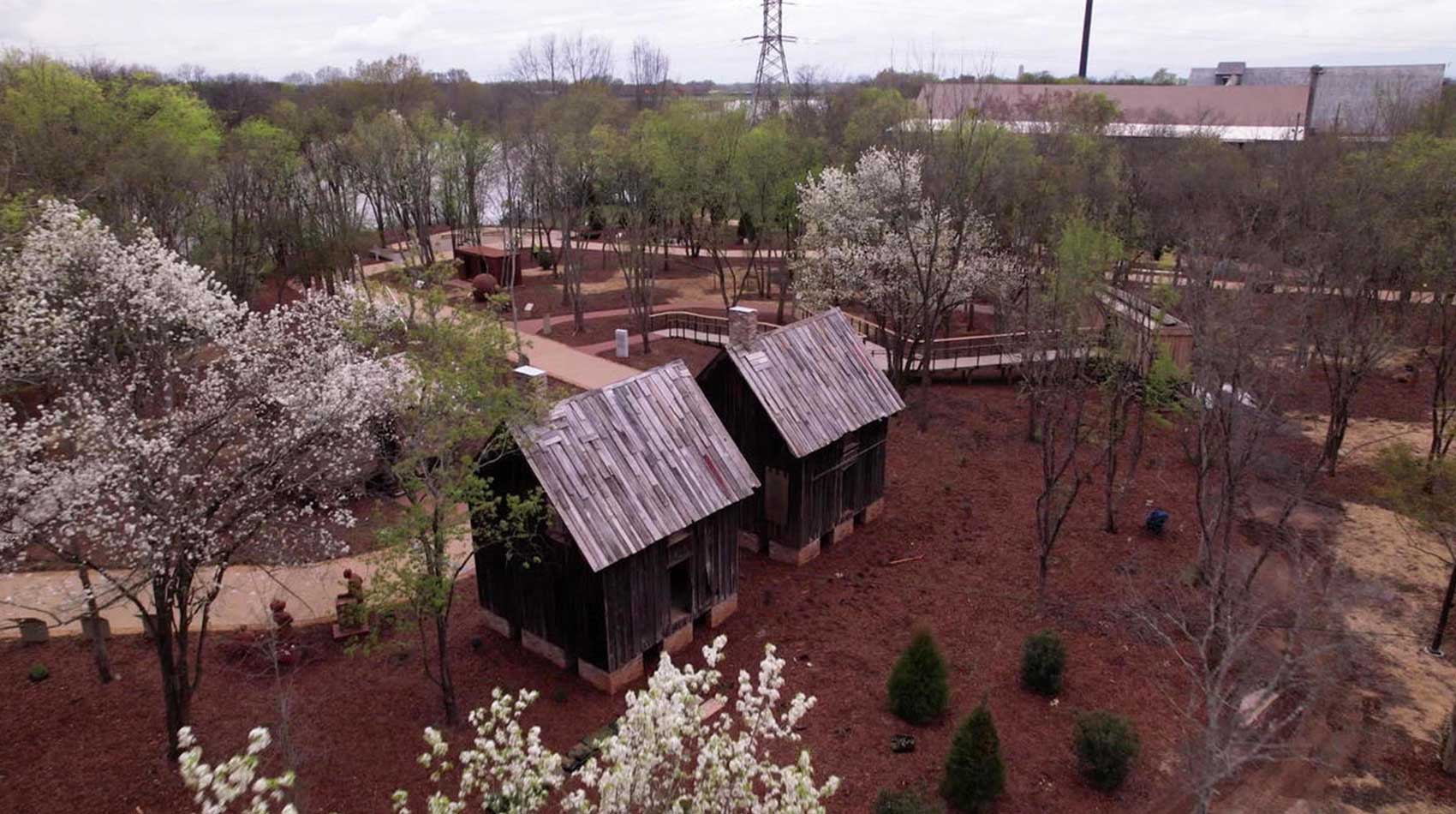Excitement Grows for EJI’s New Freedom Monument Sculpture Park
03.27.24
EJI’s Freedom Monument Sculpture Park, which explores the legacy of slavery and the lives of enslaved people through contemporary artworks, first-person narratives, and historical artifacts, is generating growing excitement with glowing reports from national and international media. CBS News Sunday Morning and NBC Nightly News with Lester Holt provide a sneak peak of our newest Legacy Site in Montgomery, Alabama.
What people are saying
- “The park mixes artifacts of slavery, like 170-year-old plantation dwellings and a whipping post, with powerful works of artistic imagination.” CBS News
- “Visitors of the breathtaking Freedom Monument Sculpture Park will be treated to ‘an immersive experience’ along 17 acres above the Alabama River, which was a primary route to transport enslaved Africans during the slave trade.” NBC News
- “The park’s artifacts feel like more than just momentary portals—they are genuine doors to history.” The New Yorker
- “The park’s artifacts and sculptures and its climactic monument are a radical act of remembrance rooted in a sense of place.” The Guardian
- “As a memorial to individuals (and their descendants) who survived a system that history has depersonalized for more than a century, the space is extraordinarily effective—and as grand in scale as any monument on the National Mall.” W Magazine
- “The history and life stories of enslaved and Indigenous people are told alongside beautiful works of art.” Vanity Fair
- “Freedom Monument Sculpture Park visually articulates the gravity of loss while paying homage to the millions of Black people who somehow maintained their capacity to love and hope for freedom along the way.” Harper’s Bazaar
- “Nearly all the works in the park were created by African American, African and Indigenous artists … Each tells a story.” USA TODAY
- The sculpture park “weaves art installations, historic artifacts and personal narratives to explore the history of slavery in America and honor the millions of people who endured its brutality.” AP News
- “A direct confrontation with slavery and its impact on this country.” NPR
- “Freedom Monument Sculpture Park is a space where the voices of the past echo through the present, where wounds of history are disinfected by the light of truth.” Rolling Stone
“An Unflinching and Moving Journey through the Story of Slavery”
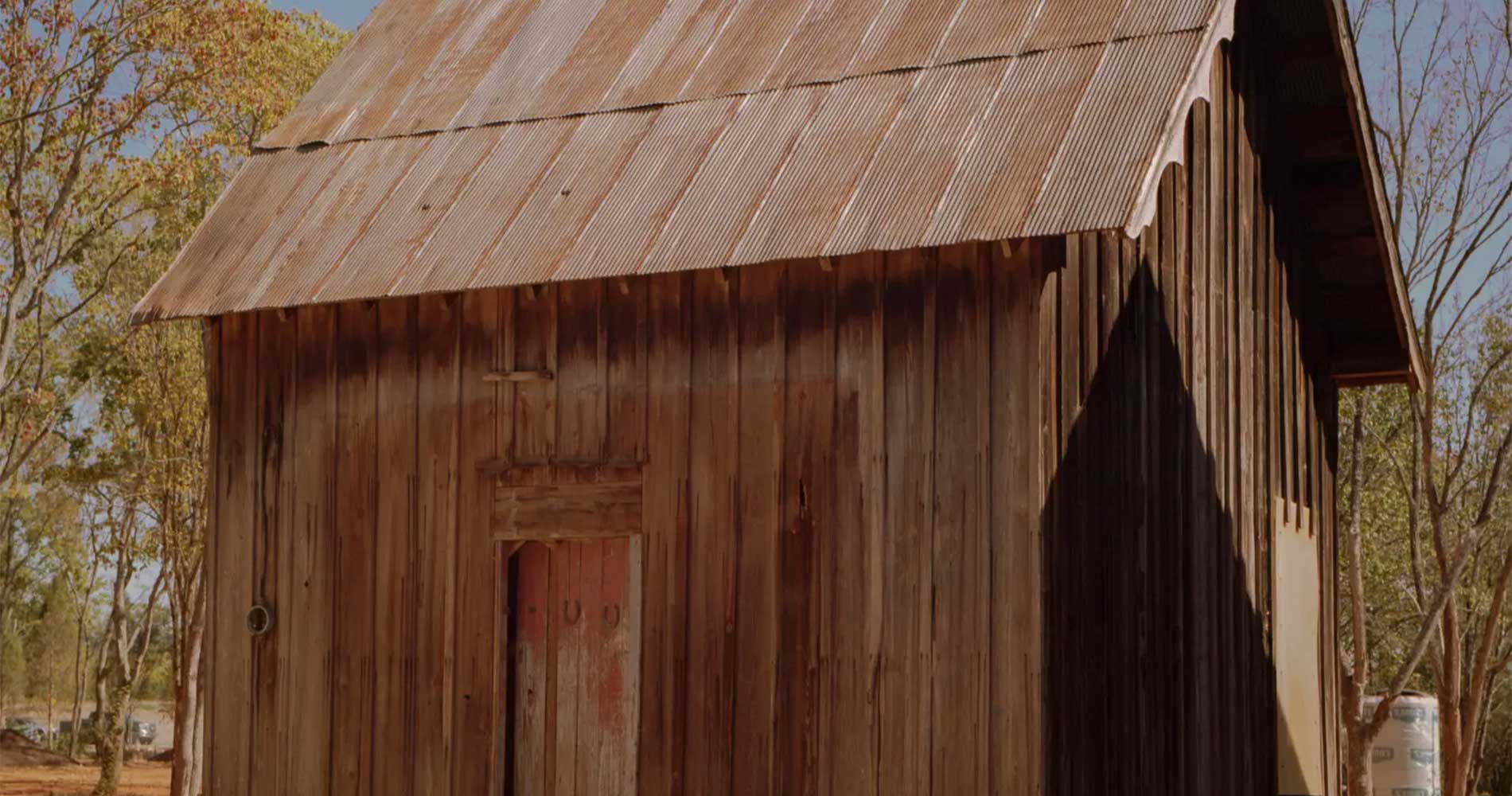
At the park, 170-year-old dwellings from nearby cotton plantations and replicas of rail cars and holding pens enable a more detailed understanding of the lives of enslaved people.
Wulf Bradley/The New York TimesThe enslavement of 10 million Black people shaped the legal, cultural, social, and economic character of the U.S. in profound ways. But the history of enslavement and the lives of enslaved people have often been ignored.
Freedom Monument Sculpture Park takes visitors on what The New York Times called “an unflinching and moving journey” that explores the institution of slavery, the lives of enslaved people, and the legacy of slavery in this country. It also honors the millions of people who endured the brutality of slavery and created a more hopeful future for this country.
“There were 10 million people who were enslaved in this country, and much of what I hope we can do is honor those who struggled and suffered, and those who endured and persevered,” said EJI Director Bryan Stevenson
The 17-acre site overlooking the Alabama River joins our award-winning Legacy Museum and the National Memorial for Peace and Justice as the latest addition to EJI’s Legacy Sites. The three sites—all located in downtown Montgomery—offer a powerful experience for visitors.
“I believe this will become a special place for millions of people who want to reckon with the history of slavery and honor the lives of people who endured tremendous hardship but still found ways to love in the midst of sorrow,” said Mr. Stevenson. “Many of us are the heirs to that extraordinary perseverance and hope. There is a lot to learn at this site and we want everyone to experience it.”
From a brief history about Indigenous Peoples to an examination of Africa before and after the arrival of Europeans, Freedom Monument Sculpture Park puts the history of slavery in context and presents powerful stories of survival, perseverance, hope, and resistance to the dehumanization that slavery created.
Sections of the park are dedicated to the transatlantic trade of African people and the domestic trade of enslaved people in the U.S., the laws of slavery in America, the labor of enslaved people, and escape, rebellion, and resistance to slavery. The narrative journey includes love, death, family, and faith.
“A Narrative of Triumph”
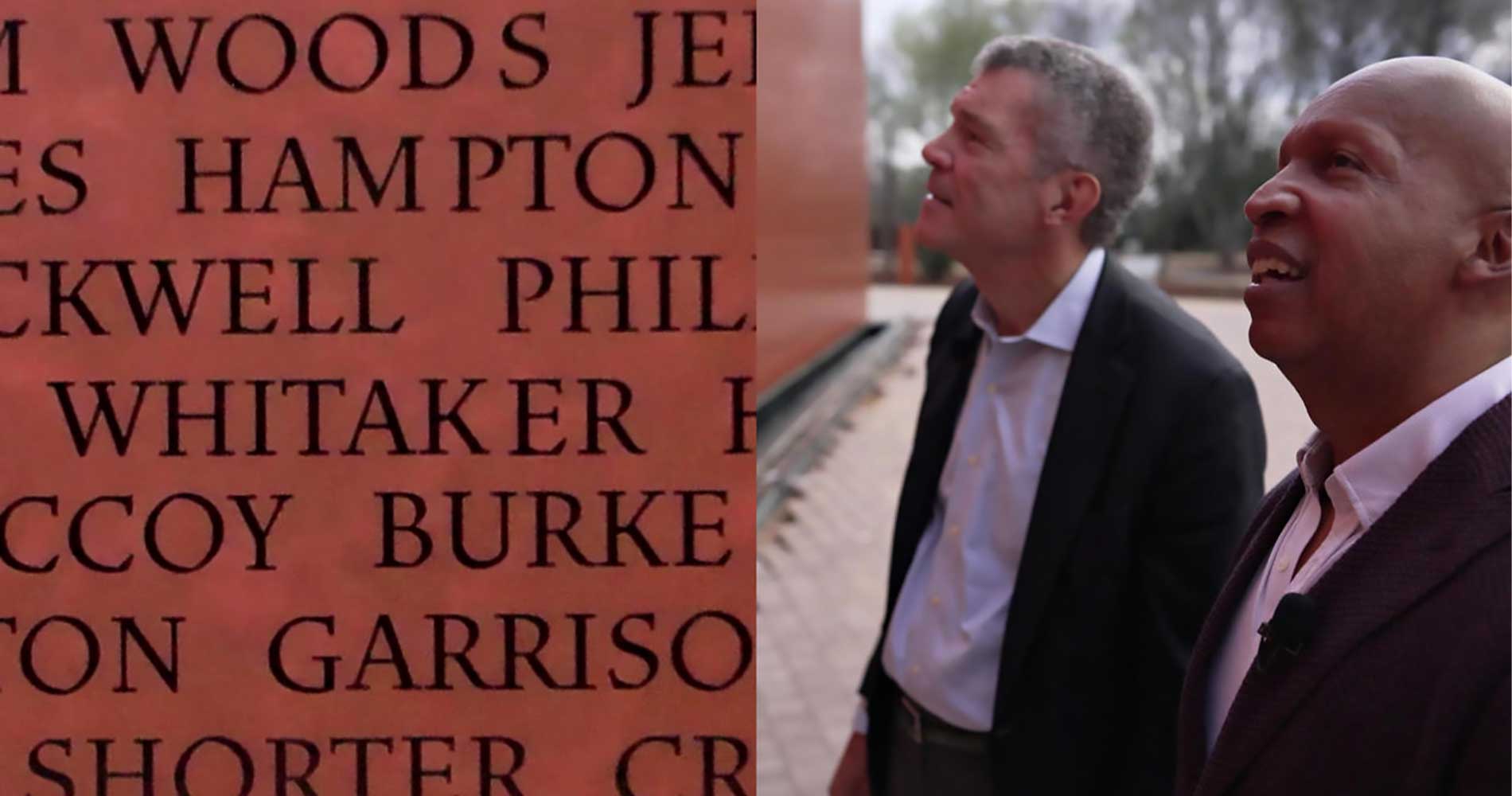
CBS correspondent Mark Whitaker immediately found his surname on the monument. “Wow. That’s moving, man. That’s moving. And with one T! Those are my people! Those are the one-T Whitakers!”
The National Monument to Freedom, standing 43 feet tall and 155 feet long, marks the culmination of the journey through the sculpture park.
Using research from the 1870 Census, the first in which formerly enslaved Black people were able to officially record a surname, the National Monument individually lists over 122,000 surnames that nearly five million Black people adopted in 1870 and that tens of millions of people now carry across generations.
Visitors can learn more about the counties and states associated with the names of formerly enslaved people and use kiosks to advance genealogical research and trace family histories at our visitor center.
“There’s a narrative of triumph that we need to acknowledge and the monument is a gesture toward that, as a physical space but also as a way of naming names, making personal, making human this history,” Mr. Stevenson told the Guardian. “For people who are descendants to come and see that name and have a tangible connection made to that legacy is important and necessary.”
“A Sculpture Park Unlike Any Other”
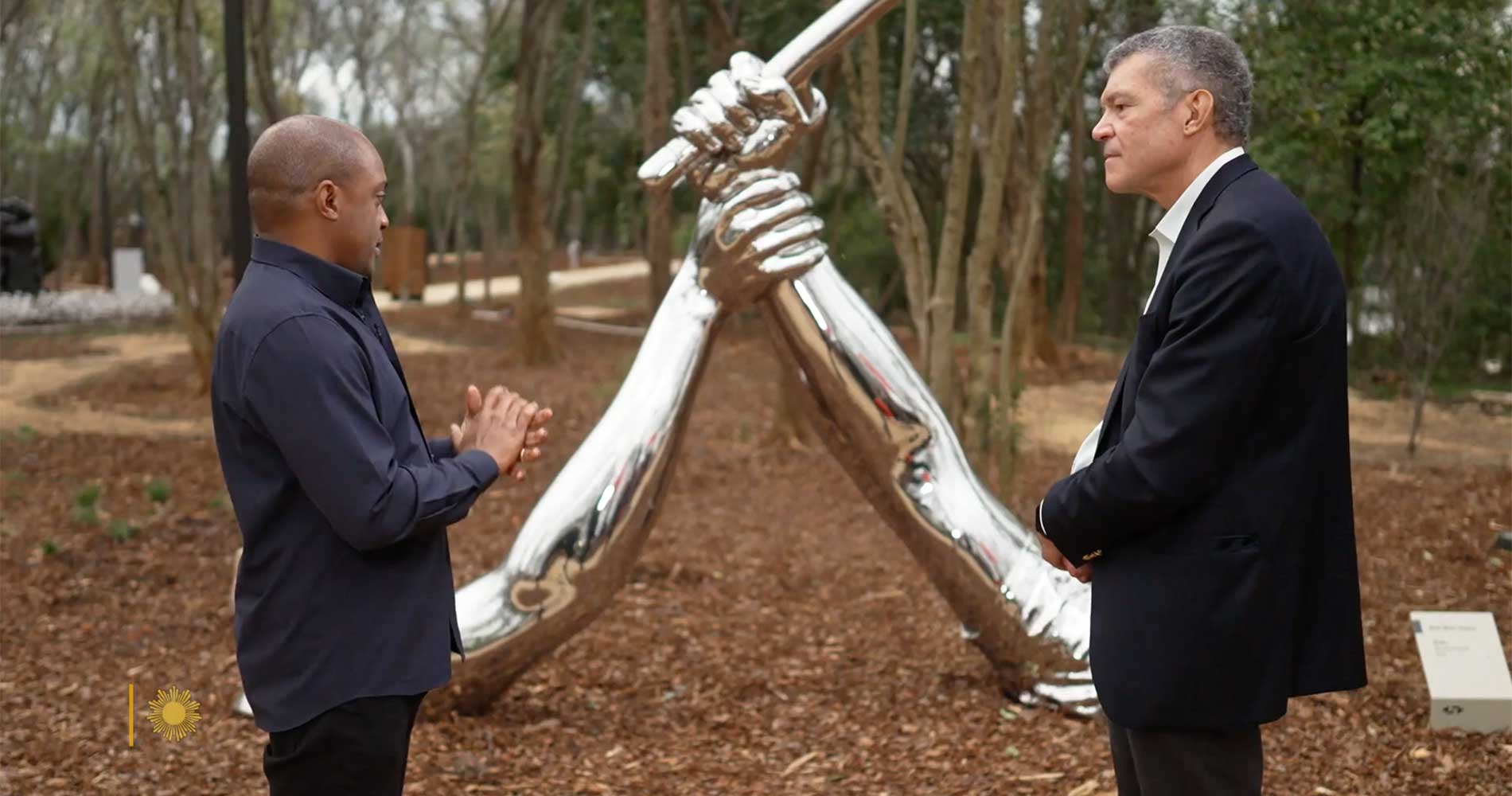
“Strike,” by artist Hank Willis Thomas, evokes violence and resistance. “I’m also thinking about peace and resolution,” Mr. Thomas told CBS Correspondent Mark Whitaker. “In this case, the gesture of just stopping the brutality begins the opportunity for us to find peace.”
Before arriving at the triumphant National Monument to Freedom, W Magazine wrote, “visitors traverse a sculpture park unlike any other.” The sculptures here tell a story and make a powerful case about our history of enslavement and its legacy.
The sculptures are essential, Mr. Stevenson told NBC News correspondent Lester Holt. “There’s not much in the visual record of that era that helps you get a sense of the humanity of these people. But artists have done an amazing job.”
The art collection at the Sculpture Park is one of the most significant narrative collections in the world, a curated effort featuring newly commissioned works by Charles Gaines, Alison Saar, and Kwame Akoto-Bamfo alongside major sculptures from Simone Leigh, Wangechi Mutu, Rose B. Simpson, Theaster Gates, Kehinde Wiley, and Hank Willis Thomas.
“Artists have the ability to depict the humanity and the dignity of people, even in the midst of something brutal and violent,” Mr. Stevenson told CBS. “It’s a tough subject. It’s a challenging subject. And we wanted to use art to help people manage the weight of this history and engage in a more complete way with the lives of enslaved people.”
“Authenticity of Place”
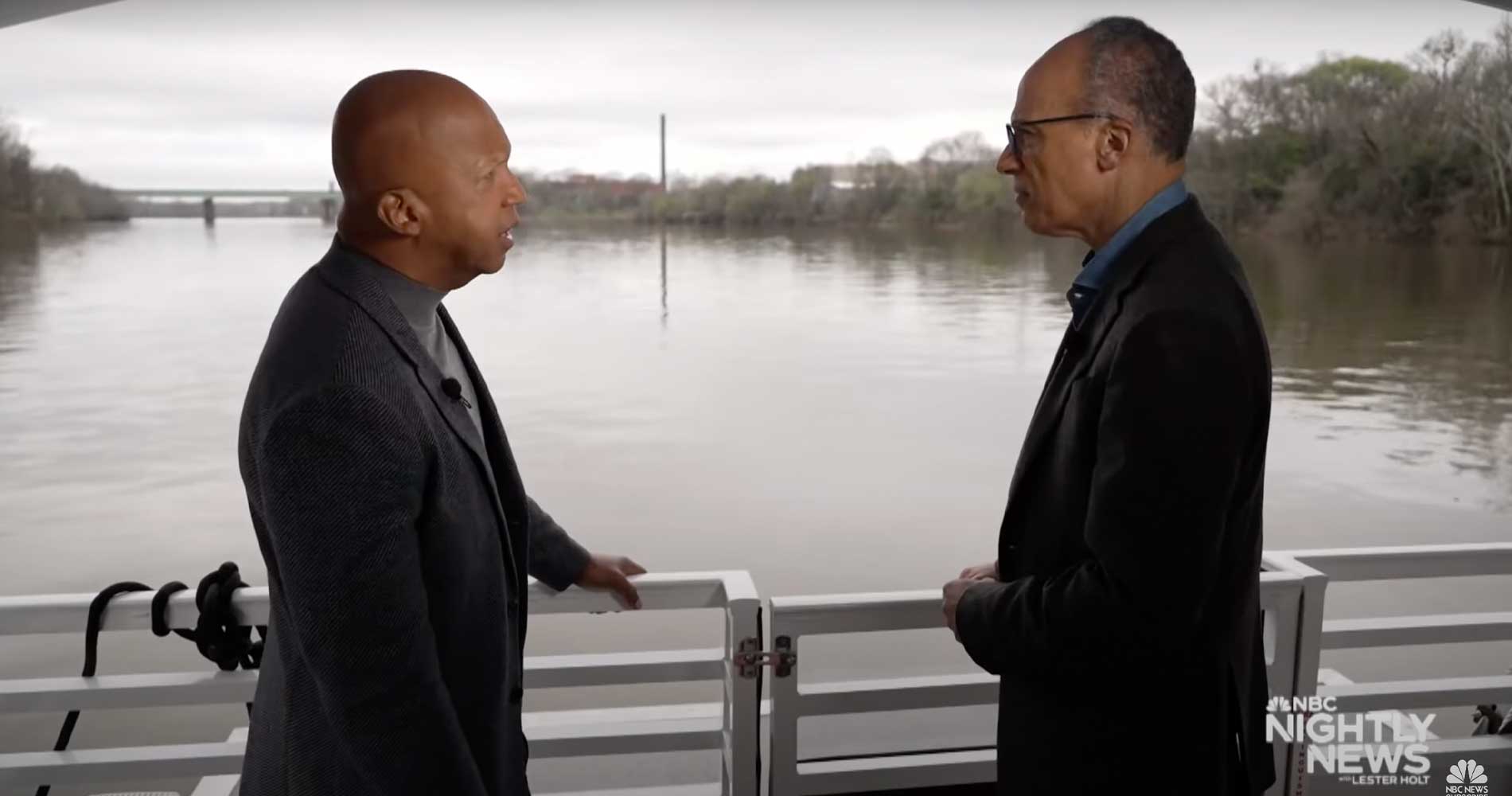
EJI Executive Director Bryan Stevenson and NBC News Correspondent Lester Holt travel to Freedom Monument Sculpture Park by boat along the Alabama River.
The Alabama River was home to Indigenous Peoples who occupied these lands for centuries before the arrival of Europeans in the 16th century—a history that is acknowledged at Freedom Monument Sculpture Park.
The river flows through Alabama’s Black Belt counties, where some of the largest populations of enslaved people in the country were forced to work on large cotton plantations along the river.
Rail became the most common mode of moving and selling enslaved people in the 1850s. Hundreds of enslaved Black people arrived in Montgomery each day. By 1860, nearly 400,000 Black people were enslaved on or near the Alabama River.
The Alabama River also has an enduring civil rights legacy. It flows under the Edmund Pettus Bridge in Selma, Alabama, where courageous people risked their lives to demand voting rights for African Americans.
The authenticity of place at Freedom Monument Sculpture Park, Mr. Stevenson told The New York Times, “provides a context that deepens the understanding of these sculptures and the narrative around them.”
Through its significant location, artwork, and historical research and context, Freedom Monument Sculpture Park is an unforgettable space for visitors to deepen their understanding of the institution of slavery and its legacy while honoring the lives of the people who were enslaved.
